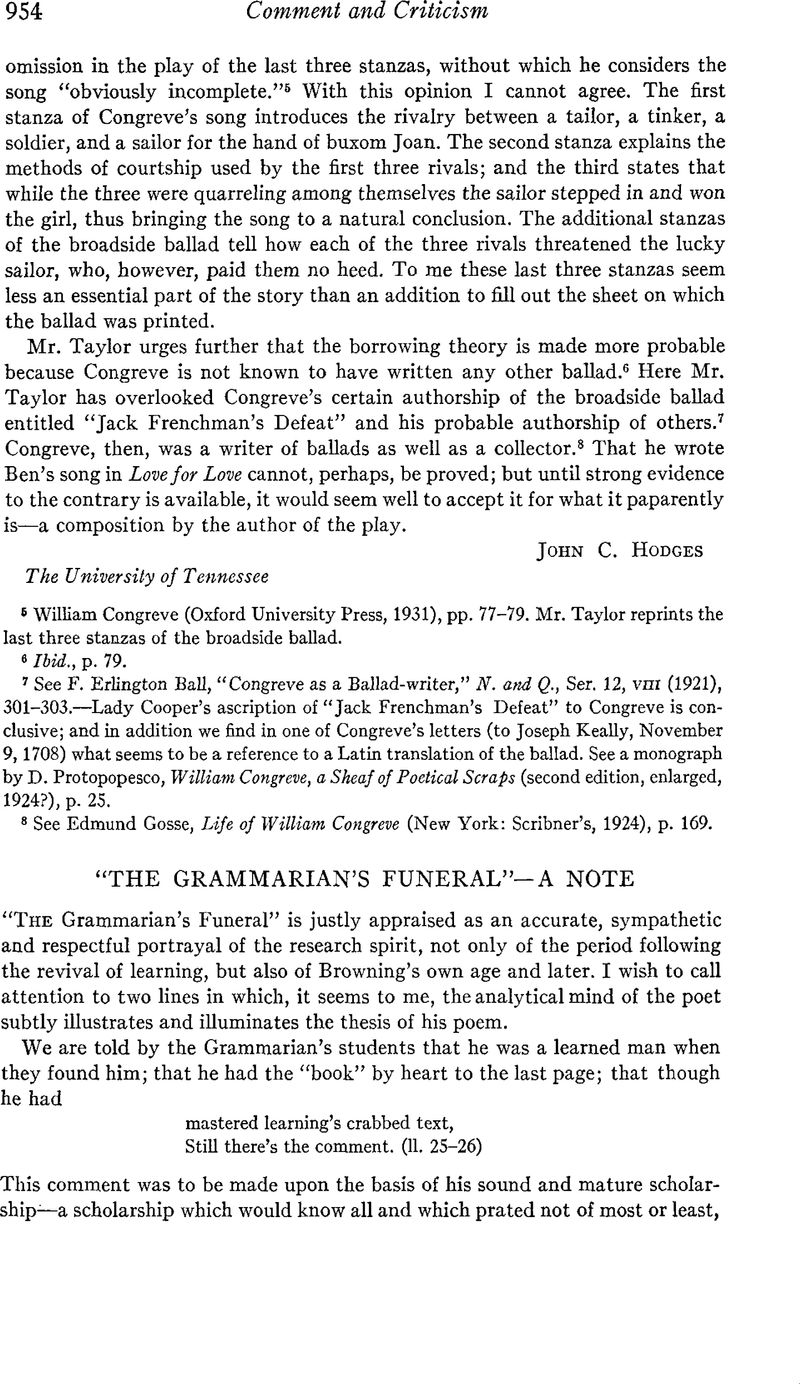No CrossRef data available.
Article contents
“The Grammarian's Funeral”—A Note
Published online by Cambridge University Press: 02 December 2020
Abstract

- Type
- Comment and Criticism
- Information
- Copyright
- Copyright © Modern Language Association of America, 1933
References
1 Harrington, V. C., Browning Studies (Boston, 1915), p. 99: “Note to l. 26 the comment, commentary written in the margin of the manuscripts. Learning is spoken of here figuratively as a book, and to go thoroughly one must read not only the text but the marginal comment.” I interpret, “Still there's the comment” not to be mastered, but to be made, and I do this because we are told that the Grammarian later settled hoti's business and gave us the doctrine of the enclitic de. For the reference to Harrington, I am indebted to Dr. J. M. Booker of the University of North Carolina.
2 Harper's secondary meaning attached to the word could not, perhaps, have been known to the Grammarian; but Browning surely knew of Leibnitz. And Browning, not the students of the Grammarian, is using the word conscious of the double meaning.
3 E. A. Andrews and S. Stoddard, A Grammar of the Latin Language, 58th ed. (Boston, 1856), pp. 32–34.—It may be presumed from the number of editions of this book that it summed up Latin scholarship upon this subject at about the date of the poem.
4 Wm. Bingham, A Grammar of the Latin Language, revised by W. G. McCabe (Philadelphia, 1884).
5 Charles E. Bennett, A Latin Grammar, rev. ed. (Boston, 1916).
6 George M. Lane, A Latin Grammar, rev. ed. (New York, 1926).
7 It may be argued that tussis is no great crux. This is true, but the Grammarian would fain eat up the feast—“even to the crumbs.” What could better illustrate this passion than an unobtrusive but nice and persistent point in grammar?
8 That Browning gave full thought to what he was doing, see his letter explaining the “doctrine” of De, Student's Cambridge Edition of poems (Boston, 1895), p. 1020.


